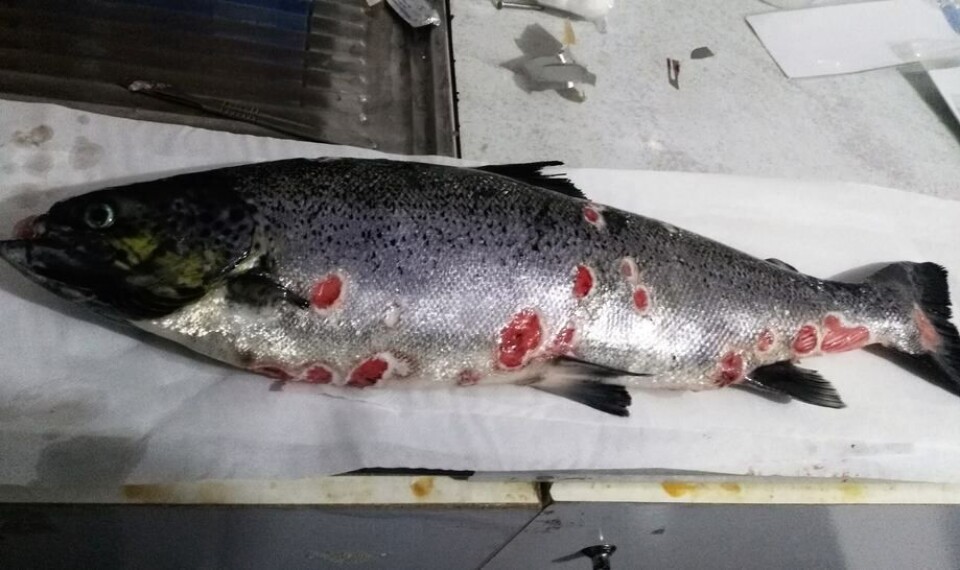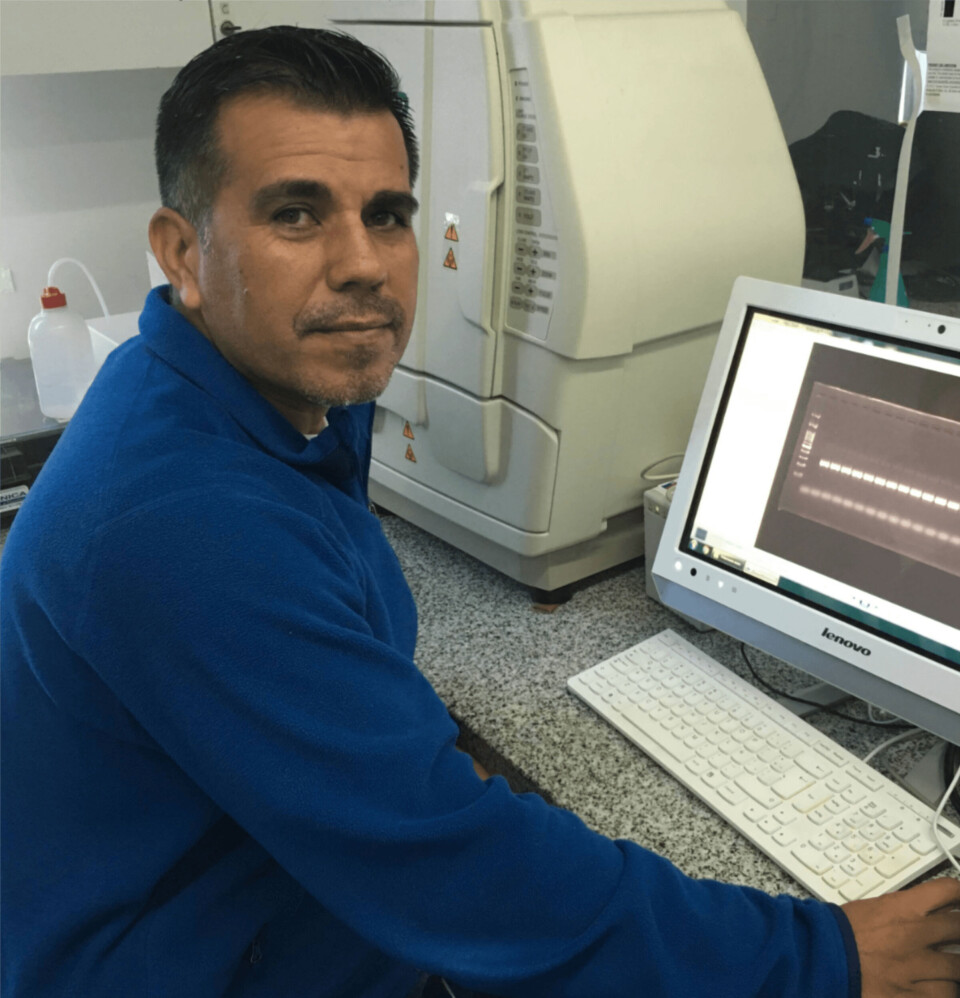
Tenacibaculum ‘here to stay’ in Chilean trout and coho
Coho salmon and rainbow trout farmed in Chile have been found to be vulnerable to the Tenacibaculum family of bacteria for the first time.
Tenacibaculosis is known to affect Atlantic salmon and the red conger eel in Chile, and instances of rainbow trout becoming infected by tenacibaculosis have previously occurred in Norway, but never in Chile.
It is the first time tenacibaculosis, which causes skin bleeding, tail and peduncle rot, and lesions in the mouth and tongue, has been identified in coho salmon anywhere in the world.
News of the discovery was presented by Chilean scientists in the Journal of Fish Diseases earlier this month.

Dr Ruben Avendaño is an academic and researcher at Chile’s Andrés Bello University and the Incar Center, and is one of the scientists who identified the occurrence of tenacibaculosis in coho salmon and Chilean rainbow trout. Here, he explains to Fish Farming Expert’s Chilean sister site, Salmonexpert.cl, the importance and details of the discovery:
What species of Tenacibaculum was detected in each of the salmonid species, and were rainbow trout and coho salmon known or established as susceptible species?
Talking about Tenacibaculum species today is very complex, but we are collaborating with the leaders in the study of this bacterial group from France, Spain and Norway, as well as with Chilean colleagues, with whom we collaborate closely to elucidate the taxonomic status of different isolates of Tenacibaculum and validating Koch’s postulates (four criteria designed to establish a causative relationship between a microbe and a disease) of representatives of the different clades (branches of the Tenacibaculum family).
What is interesting about our recent article (in the Journal of Fish Diseases) is the appearance of a group of isolates obtained from rainbow trout and coho salmon in Clade V, of which there was no history in 2018 when we published an article. It is very likely that it corresponds to a new species of Tenacibaculum. In this sense, salmon farming in Chile is very concerned about the flare-up of bacterial infections by Tenacibaculum and what is commonly coined as ulcerative diseases in fish. Today we do not know if the isolates obtained are capable of reproducing Koch’s postulates, but we have verified that rainbow trout is susceptible to T. dicentrarchi.
Do you think that the disease occurred long ago in these species, but has not been diagnosed as such? Could it be underdiagnosed, having a high prevalence in these species?
Today, everything indicates that for many years salmonid mortality was classified as piscirickettsiosis (SRS), especially in the case of rainbow trout and Atlantic salmon. If we review the statistics reported by Sernapesca, in 2018 tenacibaculosis did not appear in the data from the companies’ health teams. However, in the first half of 2019, almost 10% was reached, while piscirickettsiosis decreased in the same period by approximately 25%. Therefore, it is relevant to note that tenacibaculosis is a non-opportunistic disease and some species such as T. dicentrarchi are capable of causing the death of fish.
Furthermore, this bacterial group can also be associated with branchial pathologies. I think the most important thing is that Tenacibaculum has always been in the marine environment, but we have only considered it as of 2019. Therefore, we can say that Tenacibaculum is here to stay, being a stationary bacteria that will have a higher prevalence in winter to disappear towards the summer when P. salmonis outbreaks are more frequent.
What is the national and international importance of this discovery?
It is very relevant from two points of view: at a taxonomic and productive level. In the first case, it is relevant to know, isolate and identify the bacteria that are colonising the different environments in their widest spectrum, and bacteria should be considered at national level as a biological heritage. At a productive level, it is relevant to know that these bacteria are the ones that could potentially be the cause of the mortalities of cultured salmonids, therefore, treatment and prevention must be species specific for these microorganisms and not others, since it could negatively impact not only the salmon production but also the environment.
Does Tenacibaculum also pose a threat to wild or native species that interact with salmon farming?
Due to the situation observed in red conger eel, a native species, we believe that different species of marine fish may be susceptible to Tenacibaculum. In fact, my doctoral thesis was carried out studying T. maritimum, a pathogen capable of causing the death of sardines, turbot, sole, seahorses, etc. In addition, there are different species of the pathogen that have been associated with mortalities of different aquatic organisms, so this interaction could be generated.
Now, in the case of the intensification of salmon farming and outbreaks that can generate the transmission of Tenacibaculum spp. to native species, it is a probability that cannot be ruled out. However, there will be species that are resistant to the pathogenesis mechanisms of Tenacibaculum, since, as noted in the publication, one of the curious situations in infections caused by Tenacibaculum spp. is that it does not cause a general outbreak in salmon farms, but there are infected cages and others are not.






















































